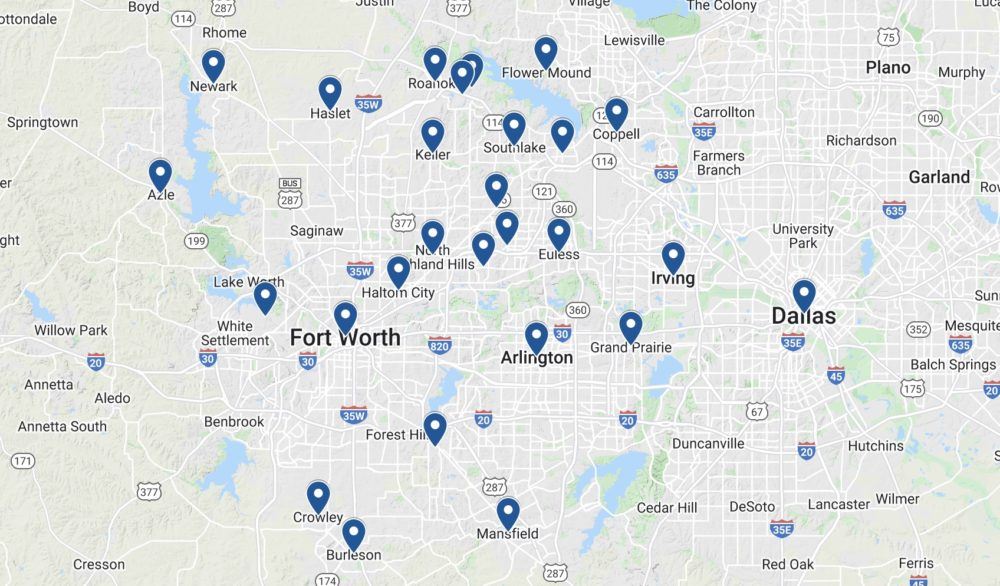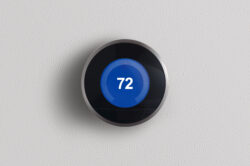Texas Pride Heating & Air – Troubleshooting Your Thermostat: Top Tips to Consider
The thermostat in your home plays a crucial role in managing your HVAC system, whether it’s a furnace, air conditioner, heat pump, or any other type. When your thermostat isn’t working correctly, it can disrupt your comfort. We’re here to guide you through basic thermostat troubleshooting to help you resolve issues quickly before contacting a technician for service.
Thermostat is Not Turning On
One of the most common thermostat problems is when the system doesn’t turn on, leaving you unable to adjust the temperature. If your thermostat’s screen is blank when you press a button, it indicates an internal issue preventing it from turning on.
What Can You Do?
Check the Batteries: If your thermostat isn’t working, try changing the batteries. Replace the old ones with new ones and power up your thermostat. If it doesn’t solve the problem, or if your thermostat doesn’t use batteries, check your home’s electrical system. If you can safely access your circuit breaker, try resetting it.
Thermostat is Stuck on One Temperature
If your thermostat is stuck on a single temperature, it’s not ideal, especially if it’s uncomfortable for your home. Similar to a thermostat that won’t turn on, a system or electrical issue might be responsible.
What Can You Do?
Check for Lock: Make sure your thermostat isn’t locked. Accidental button presses can lock it. To unlock it, press the plus (+) and minus (-) keys simultaneously for at least five seconds. If it remains stuck, change the batteries and reset the circuit breaker as you would for a non-responsive thermostat.
Home Temperature Doesn’t Match Thermostat Settings
If your pre-scheduled thermostat settings don’t match the actual temperature in your home, there might be an issue with your system.
What Can You Do?
Calibration: Double-check if your thermostat’s temperature settings match the actual temperature in your home. Confirm by taping a thermometer to the wall next to your thermostat and comparing the readings after 20 minutes. If there’s a difference, try cleaning your thermostat by removing the cover and removing dust and lint. If that doesn’t help, check and change the air filters in your HVAC system. If the issue persists, contact an HVAC professional.
Air Conditioner (AC) Thermostat Not Working
A malfunctioning AC thermostat can be inconvenient, especially during hot weather. Troubleshooting can help restore proper cooling and airflow.
What Can You Do?
Check Power: Ensure your thermostat’s display is lit; an unlit display can’t signal the AC to start. Check for simple issues like dead batteries, a tripped breaker, or a blown fuse in your electrical service panel. If the unit is powered and the issue persists, clean the thermostat for dust, dirt, or debris. Turn off the thermostat breaker to clean it safely.
HVAC System is Not Working Properly
When your HVAC system stops working or behaves erratically, it might be related to the thermostat. Troubleshooting the thermostat is a good starting point.
What Can You Do?
Check Power Source: Start by resetting the circuit breaker to ensure power to the system. If that doesn’t resolve the issue, it’s time to consult an HVAC professional. They can assess your HVAC system’s compatibility with your thermostat and check for sizing issues. If necessary, they’ll diagnose and resolve the problem.
Thermostat Replacement
While troubleshooting can often resolve thermostat issues, there are times when a replacement is the best option. Signs that it’s time for a new thermostat include:
- Unresolved Issues:
- Frequent Issues:
- High Utility Bills:
- Old Age:
- Deep-Rooted Electrical Problems:
If troubleshooting hasn’t fixed the problem.
When your thermostat frequently malfunctions.
Unexpectedly high energy bills.
If your thermostat is over 20 years old.
When the issue is related to complex electrical problems.
When to Call a Professional
If you’ve exhausted troubleshooting options and the problem persists or if you’re uncomfortable performing these tasks, it’s wise to contact a professional HVAC technician for guidance and assistance.
Areas We Serve







